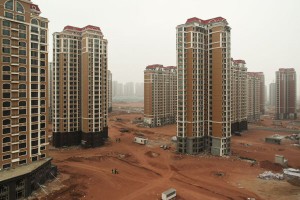There is a phenomenon happening overseas. China has begun a rapid process of urban planning so ambitious, it eclipses their already substantial population. A phenomenon known as “Ghost Cities,” wherein developers create more space than necessary, has been growing rapidly across the country. Why the Chinese have suddenly started making room for more than what’s necessary has boggled many analysts minds, but just how severe is this overcompensation?
Recently unveiled, the greatest of the latest ghost cities has the space to house nearly 3.4 billion people. That’s three times as many people that live in all of China. A massive city built to hold every citizen of China three times over, but why? Why bother to build something that, as of this moment, could never be filled? Though certainly the most ambitious expansion, it’s hardly the last.
 Over the past few months, China has started construction on multiple city expansion projects. Each of the provincial capitals are set to receive nearly 5 new urban areas for future families. Along with their capital cities, regional cities are due to receive nearly two districts each. Every city across china is blossoming, making space for millions of more citizens. But why bother with the expansions? If building entire blocks, whole cities for a population that isn’t there to fill it, what will happen to the space?
Over the past few months, China has started construction on multiple city expansion projects. Each of the provincial capitals are set to receive nearly 5 new urban areas for future families. Along with their capital cities, regional cities are due to receive nearly two districts each. Every city across china is blossoming, making space for millions of more citizens. But why bother with the expansions? If building entire blocks, whole cities for a population that isn’t there to fill it, what will happen to the space?
Over 90% of China’s cities have announced plans for new districts while the 12 provincial capitals are planning a total of 55 additional districts. This push for space and expansion represents a trend that China has perpetuated, either in an effort to inspire the creation of jobs for their workforce, or present the facade of positive growth. But when the cement is laid and the buildings are finished, the empty streets and homes will be little more than haunting.